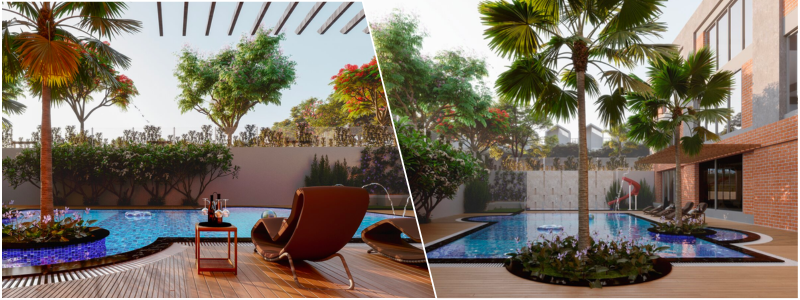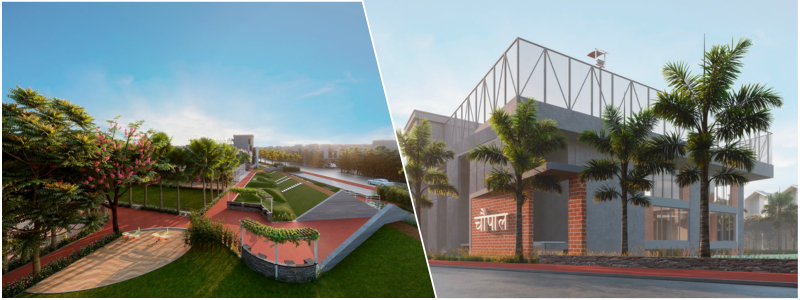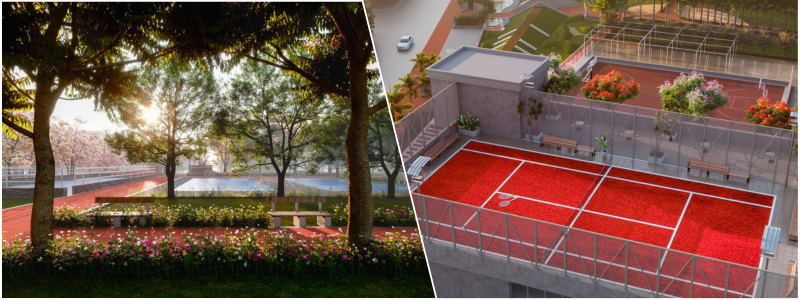Architectural rendering has existed since the Renaissance era. Previously, designers visualized their plans through sketching. Since then, 3D architectural rendering services have revolutionized design and architectural fields. The world has come a long way from the traditional paper sketches. Today, architects and designers can create 3D architectural renderings to explain ideas and express themselves.
Creating art no longer requires long hours of drawing, mountains of paper stacks, and endless designs. All it takes is merely clicking a button to correct a simple single error. However, your company must choose and use the best hardware and software for your 3D architectural rendering projects to make this possible and doable.
 Table of contents
Table of contents
Hardware for 3D architectural renderings
As far as hardware is concerned, it would help to remember that 3D rendering is a complex process that can also be very time-consuming. The 3D rendering procedure calls for computing power. This power comes from two completely different sources: the CPU and the GPU.
The Central Processing Unit (CPU) is your processor. This option is for lower-end rendering software because the CPU doesn’t have the same rendering power as the GPU. On the other hand, the Graphics Card or GPU is relatively faster than the CPU because it serves what it was designed to do: render graphics. The GPU can also deliver much better results than the CPU, with some software having the option to switch between these two processing units.
The rendering process uses up your PC’s cores and needs processing power. There are fewer cores in your CPU than in your GPU. The other processes that run on the PC also constantly use them. The GPU has more cores than the CPU, and its primary purpose or function is to render graphics. Therefore, having a great graphics card is better than a good CPU for 3D architectural renderings.
RELATED: What are architectural rendering costs, rates, and pricing for companies?
Hardware specs and requirements for 3D architectural renderings
All 3D architectural rendering designers require computers that have more powerful hardware specifications. If you don’t have a capable computer, even simple tasks will take a long time to load, while basic actions will be delayed several minutes. This level of inefficiency is downright unacceptable in any professional setting.
It would help if you chose a powerful CPU that can make your selected 3D computer graphics program work without any frustrating lags. Here are vital factors to consider when searching for a CP for your 3D architectural rendering projects:
Clock speed
The clock speed denotes the rate at which a central processing unit (CPU) delivers instructions. Many modern CPUs support a feature known as dynamic overclocking, also often referred to as Turbo Boost. This momentarily boosts the clock speed as needed to meet the demand.
Number of cores
A core is the CPU’s part that crunches numbers. A CPU that has more cores can perform more tasks simultaneously. Cores are specifically important regarding CPU rendering since CPU rendering engines designate a single bucket to every core.
Price
You can get CPUs at different price ranges. However, the best ones for 3D architectural renderings belong to the high-end category, with several CPUs known to have a much better value for money than others.
RELATED: How can real time rendering services help companies stand out in the digital era?
Software for 3D architectural renderings

In the realm of 3D architectural visualization services, numerous factors must align for successful 3D rendering. Yet, at the forefront stands the critical choice of software. The software you select plays a pivotal role in determining the quality, speed, and ultimate outcome of your architectural visualization projects.
Rendering software programs have varying prices, with several essential software programs being free while the rest can cost you a few thousand dollars. Their sophistication is the main difference between these different software programs. The sophistication of any rendering software entails quite a lot in terms of its function and several critical roles.
You’ll want to begin with more straightforward software if your company is less experienced. Alternatively, if you’re an experienced company, you’ll likely find using a more expensive 3D architectural rendering software more satisfactory. Higher-end software will provide more customization options for skilled users.
Everything depends on your specific needs and requirements. You can begin with something other than professional software. If your company has little business yet or you’re a smaller company, you won’t benefit much from software worth several thousand dollars that only a small team will use. You have to buy your software according to your unique needs.
RELATED: What are architectural 3D visualization costs, service fees & rates for companies?
What to look for in 3D architectural rendering software
Since the software you use can make or break the results of your 3D architectural rendering projects, you must remember several essential qualities to look for before settling for one.
Availability
3D applications are available for different fields and industries. If you’re working on architectural design, you’ll likely use SketchUp, Rhino, or Autodesk Revit. But if you’re in the field of 3D architectural rendering or visualization, 3DS Max might be your go-to tool. If you’re working with animation or VFX, use Maya, Houdini, and Cinema 4D.

It means that before anything else, you must determine if there is an available rendering engine option for the software you plan to use. Some rendering software programs are only available to a few applications. This can be especially tricky since a few might have modeling limitations. That’s why you must select a render engine that meets your application requirements.
Ease of use
Your idea is the most important thing as far as your 3D architectural rendering projects are concerned. You don’t want there to be a long waiting time or figure out how something should be done and then spend countless hours just trying it. You’d hope your 3D architectural rendering software is easy to learn and use, with its power not compromised. Spending more time being creative instead of waiting will be so much better.
Flexibility
Every craft has its own needs, so the best software must be able to do everything as much as possible. 3D architectural visualization scenes, for instance, are usually enormous and feature several billions of polygons required for more detailed buildings and specific vegetation used as part of the backdrop.
On the other hand, VFX requires a constant information flow between the software in the pipeline whose scenes go to Maya from 3DS Max and back again, complete with liquids, smoke, particles, fire effects, and more. The key here is flexibility, and the 3D rendering software must be able to render anything you have in mind and fit it seamlessly into your pipeline as much as possible.
Price
Money is a serious consideration. Aside from all the technical aspects and elements involved, the price tag plays a significant role in your chosen software. There are many options available, but the best software is one that hits the sweet spot between power and price. It should be affordable enough and still can do what it needs to do without cutting corners.
RELATED: 3D rendering costs & 3D visualization prices for firms
Realism
Many clients look for photorealism when choosing 3D architectural rendering software. Photorealism refers to how close an image is compared to the real world. The viewer should believe the existence of the subject somewhere in the real world, whether it’s a crazy alien or a cozy house.
For this level of realism to be possible, your 3D architectural rendering software must have the ability to calculate lighting in the real world with precise light reflections, refractions, and bounces. The materials should also abide by real-world physics to look right. This realism can be crucial to prototyping real-world items before they are manufactured. Using the right 3D architectural rendering software will give you a great idea of how a design will respond to and look under the light.
Reliability
Your rendering software will gather all the essential data you’ve made and transform it into an image, whether a still or an animation frame. It means that you need reliable software so you can be sure that it will always work. It should also be designed from scratch to deal with your most significant and most complex projects, regardless of the heaviness of the scene or how silly it may seem. You would want to be supported even if your software is unreliable.

Speed
Your 3D rendering software should be extra fast if creativity is your craft. Spending a long time waiting for your render to be completed rather than pushing your creativity’s limits doesn’t sound smart. This is why harnessing the power of all available hardware makes the big difference between a good and excellent result. The 3D rendering software you choose must leverage both GPU and CPU and use all machines available in your network so you can take advantage of your hardware and work the fastest way possible.
How Cad Crowd can help
Cad Crowd can help you find the best 3D architectural rendering services that use the best hardware and software combination at their disposal.
